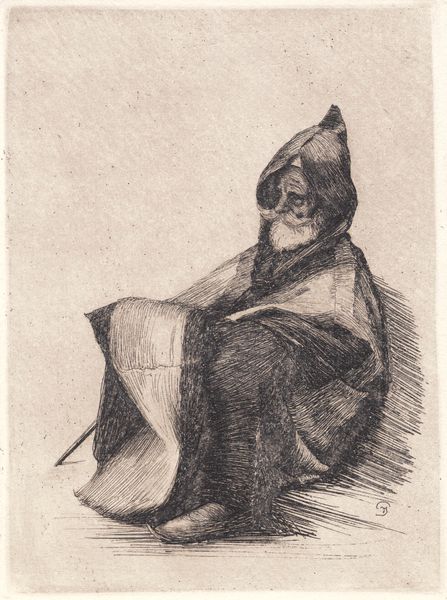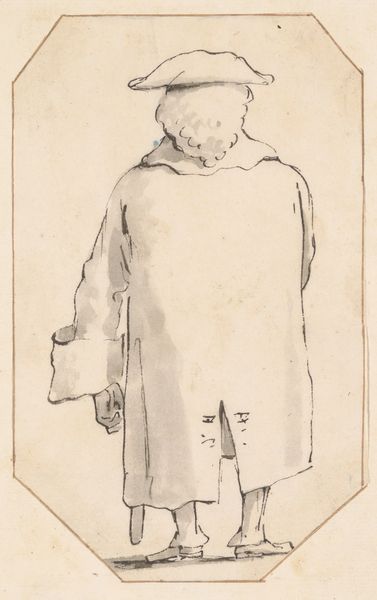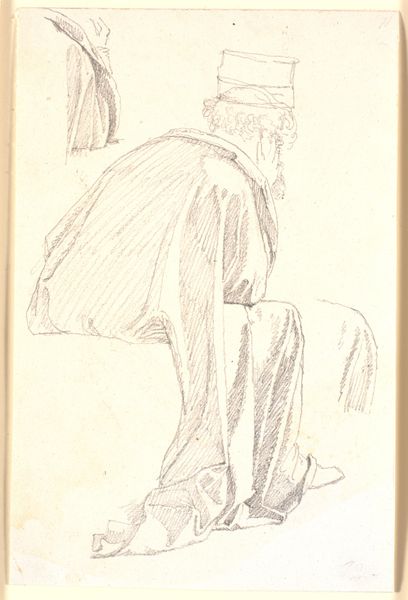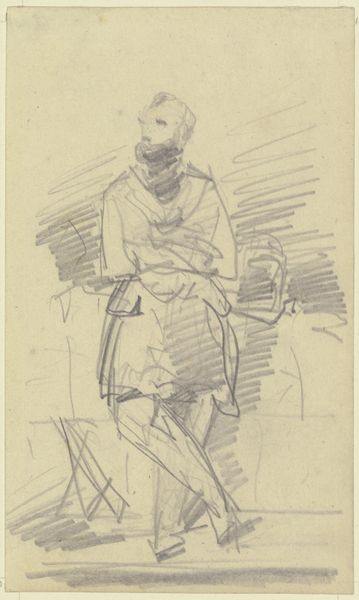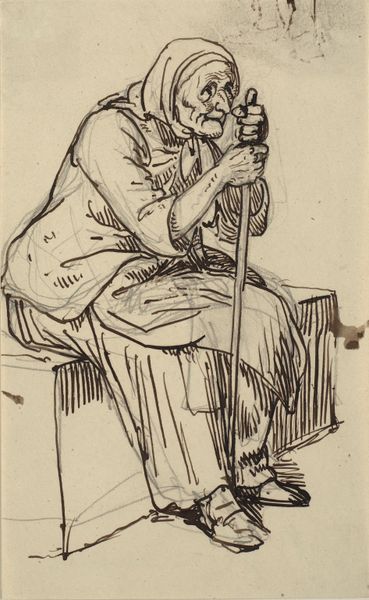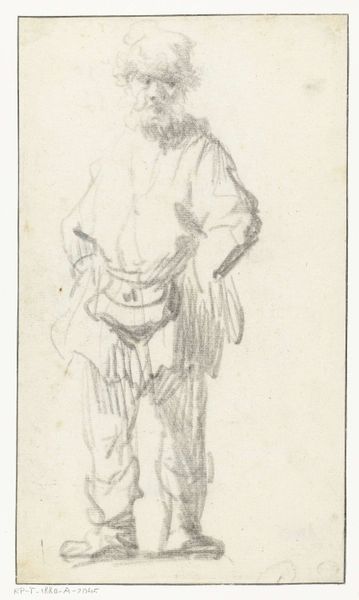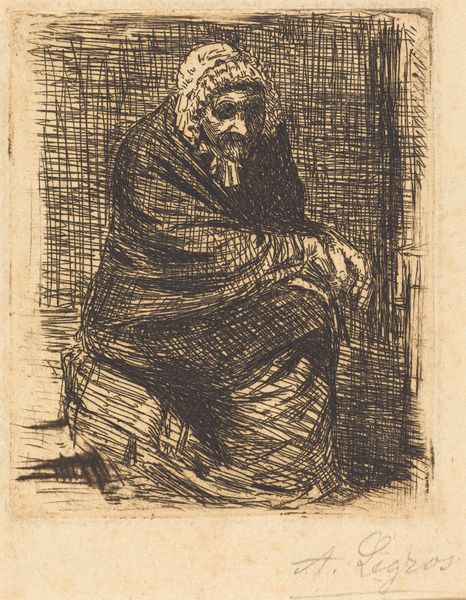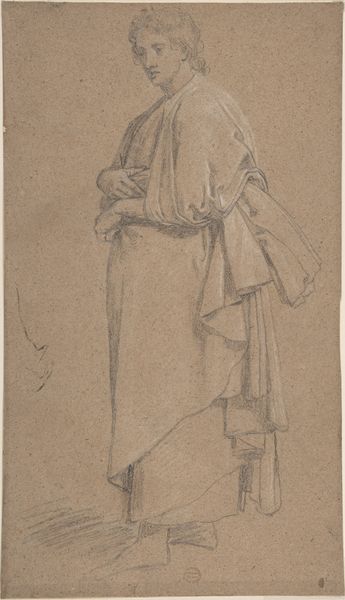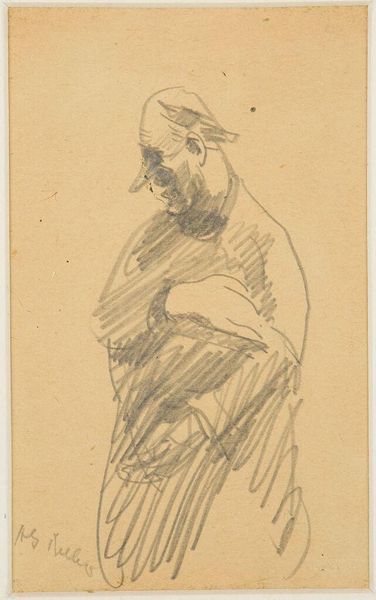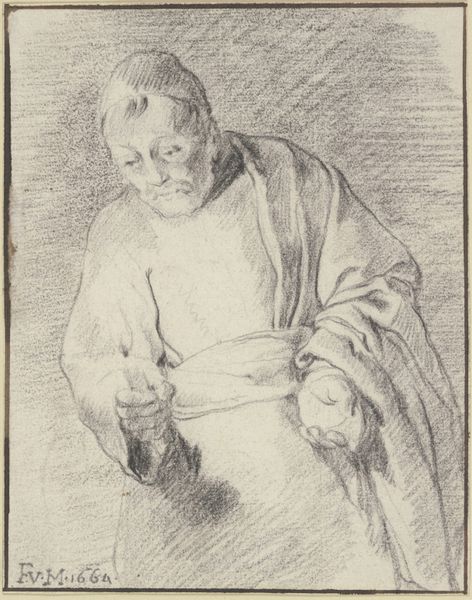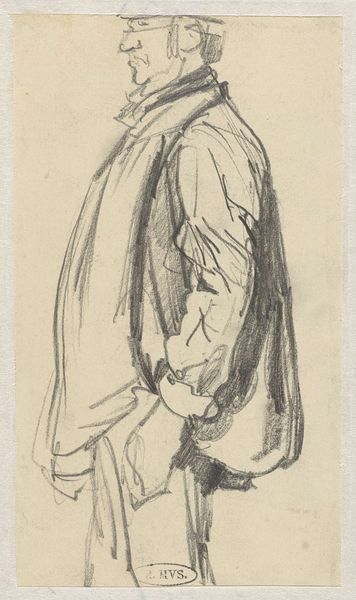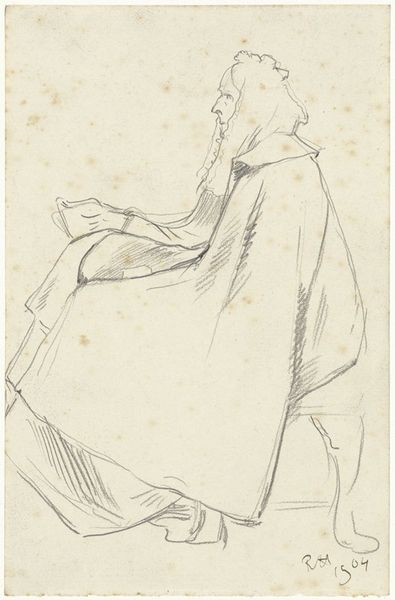
drawing, pencil
#
portrait
#
drawing
#
german-expressionism
#
figuration
#
pencil
#
expressionism
#
modernism
Dimensions: overall: 34.6 x 26.4 cm (13 5/8 x 10 3/8 in.)
Copyright: National Gallery of Art: CC0 1.0
Editor: So, here we have Ernst Barlach's 1916 pencil drawing, "Man Kneeling." The way he's hunched over makes him look almost fetal. What strikes you most when you look at this piece? Curator: You know, it reminds me of a time I got completely lost in the woods, utterly disoriented. There’s this vulnerability in his posture, a kind of desperate search for something. Maybe forgiveness? The way his head is tilted back…it's like he’s pleading with the heavens. And the raw strokes of the pencil – it's not just a drawing; it’s a raw nerve exposed. Don't you think? Editor: Absolutely, that raw nerve sensation rings true! It is compelling. The way the cloak envelops him, though... does that give you a sense of comfort too? Or is that just another layer of isolation? Curator: Interesting question. I'd argue the cloak is more about hiding, a barrier. Look at how the lines define it -- heavy, almost oppressive. This isn't warmth; it's weight, isn’t it? Do you feel trapped when you look at it? Barlach lived through such turbulent times. This isn't just a man; it's the embodiment of a soul crushed by war. Editor: I can see the weight now that you mention it. It almost feels like a physical manifestation of grief. Thinking about it in terms of his experience definitely adds a new layer of meaning. Curator: Exactly! And maybe that grief offers connection. We look, we empathize, we feel. And art—well, art connects us, even through pain. Isn’t that remarkable? Editor: That's a powerful way to put it. I'll definitely be pondering that connection for a while.
Comments
No comments
Be the first to comment and join the conversation on the ultimate creative platform.
